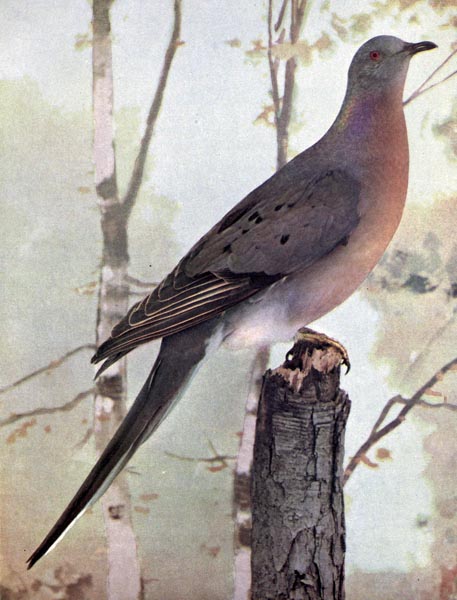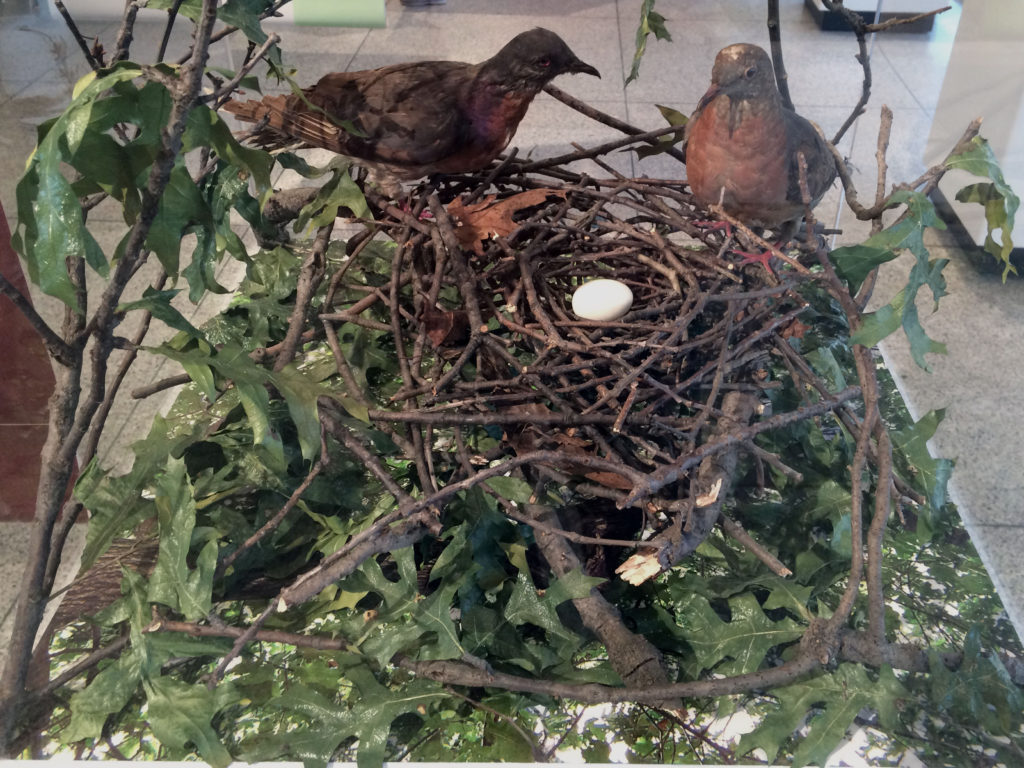
Passenger pigeons (Ectopistes migratorius) were migratory birds who wintered in the southern United States and migrated north in the early spring. The northern migration was of stupendous proportions: many historic accounts describe how flocks of migrating pigeons would stretch for miles, take all day to pass overhead, and were sometimes heavy enough to block the sun and darken the skies.
For many years, the passenger pigeon has been presumed to have been equally abundant in prehistory, although the species has not been studied in depth by archaeologists or paleontologists. In recent years, however, some have argued that passenger pigeon was not nearly as abundant in prehistory as previously believed. These questions are not new. In 1935, Margaret Mitchell wrote:
It is fascinating to speculate on the origin and history of such a wide spread and extravagantly numerous species—when were they at their maximum and how many years did it take them to attain it? Had the Indians known them in greater numbers than existed on the arrival of the white man?
Truly understanding the passenger pigeon, its history, community ecology, and its ultimately tragic interactions with humans, requires analysis of the archaeological and paleontological record of passenger pigeons. It seems wise to review the archaeological and paleontological record of passenger pigeons to determine whether the alleged scarcity of passenger pigeons in prehistory is supported by osteological evidence – actual passenger pigeon bones.
You can read about how passenger pigeons fit into the diet of prehistoric Native Americans at the Lamoka Lake site in Deer, Passenger Pigeons, and Hunter-Gatherers. Listen to a discussion of whether we can really know if passenger pigeons were as abundant as everyone said in the Outside/In podcast below:

Initial results of a study of biogeography and stable isotopes were presented at the 2019 Society for American Archaeology conference:
Madrigal, T. Cregg and Suzanne Pilaar Birch
Archaeology and Stable Isotope Ecology of the Passenger Pigeon: Tracing the Prehistory of an Extinct Bird
Abstract: The passenger pigeon, once the most abundant bird in the world, became extinct barely a hundred years ago. It has been assumed that the passenger pigeon was equally abundant prior to the European colonization of North America, but some have argued that the bird was nowhere near as common in prehistory. Because so much of what is known is based on historical records and anecdotal accounts, a central problem is the lack of knowledge regarding the ecology and behavior of this species and the extent to which passenger pigeons were used by prehistoric Native Americans. We review the paleontological and archaeological record of the passenger pigeon and its interactions with humans throughout the United States and Canada. We also report the results of stable isotope analyses of passenger pigeon bones that provide additional information on their ecology and migratory behavior, as well as Native American seasonal subsistence patterns.
A Sampler of Archaeological Sites (there’s a lot more out there):
Book Review: The Passenger Pigeon by Errol Fuller
Reference:
Mitchell, Margaret H., 1935. The Passenger Pigeon in Ontario. Contributions of the Royal Ontario Museum of Zoology ; no. 7. pp. 14-15.


1 comment